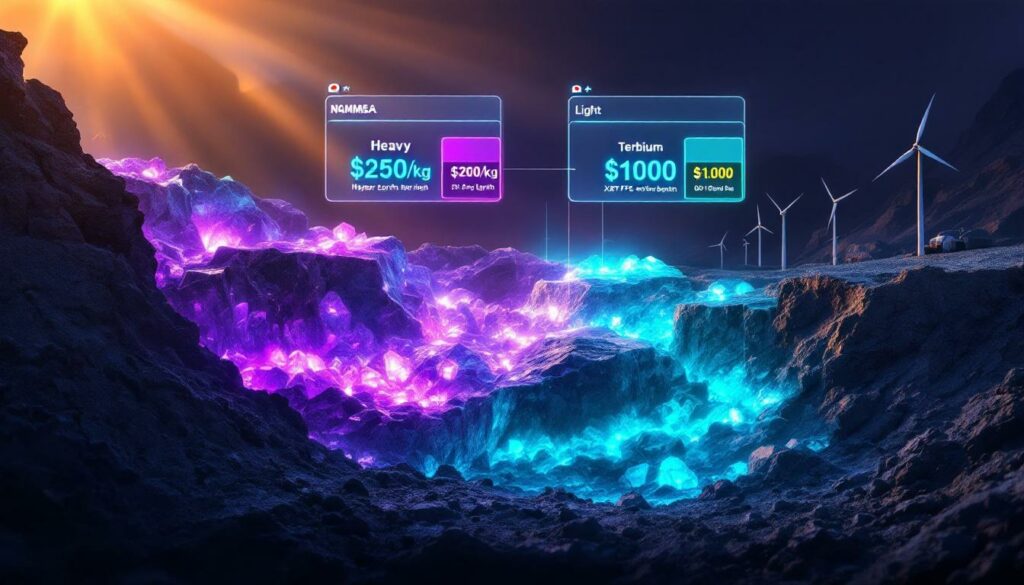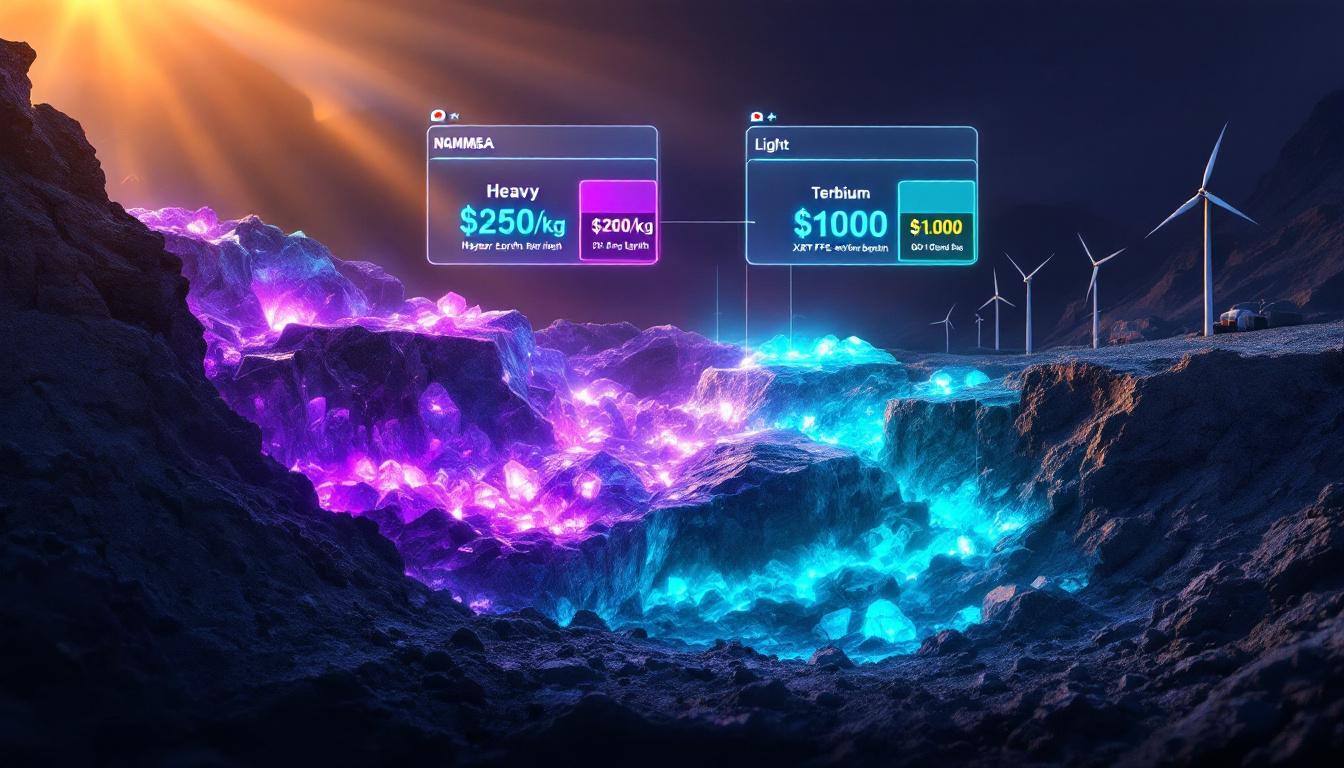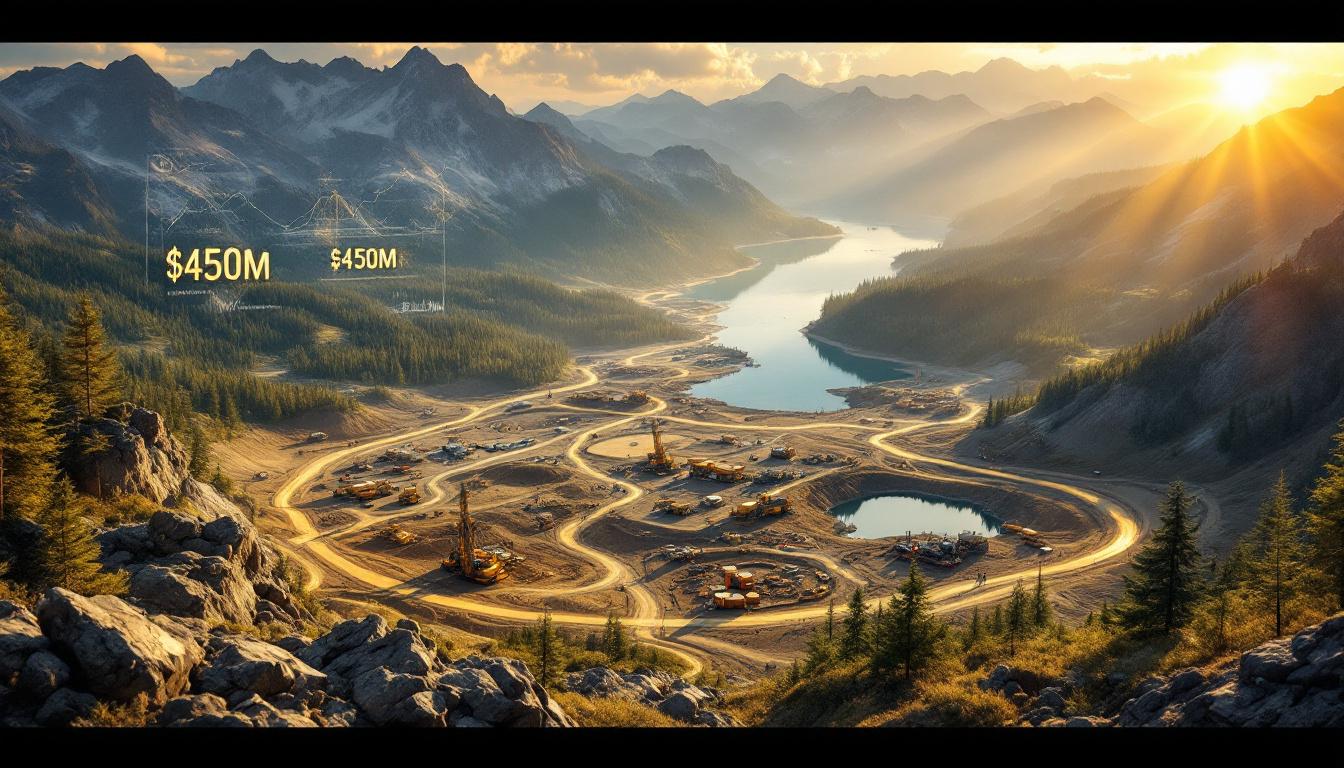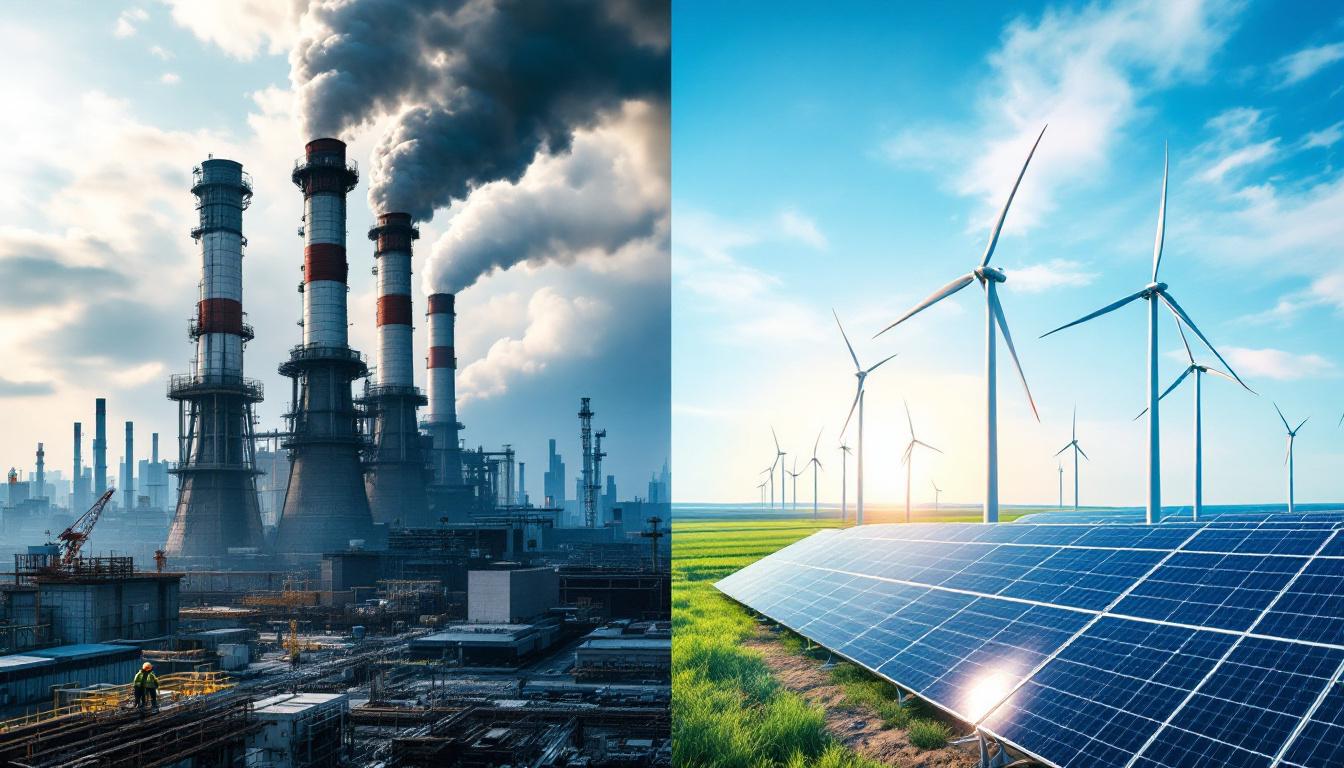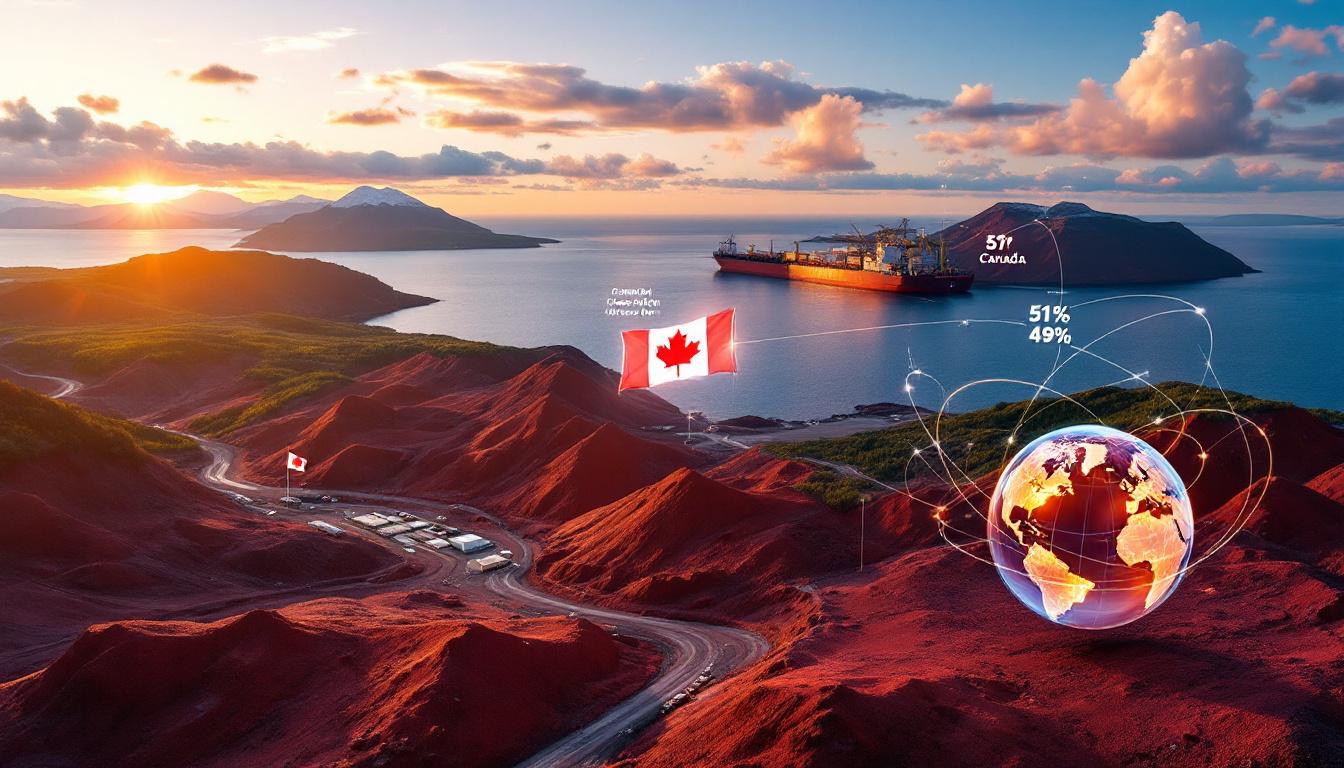What Are Heavy Rare Earth Elements and Why Do They Matter?
Heavy rare earth elements (HREEs) represent a specialized category of critical minerals that hold immense strategic value in today's technology-driven economy. Unlike their more abundant light rare earth counterparts, HREEs command significantly higher market prices due to their unique properties and limited global supply.
Key Price Differentials: Dysprosium currently trades at approximately $250 per kilogram, while terbium commands over $1,000 per kilogram. In contrast, light rare earths like neodymium and praseodymium typically sell for around $65 per kilogram, highlighting the substantial premium placed on HREEs.
"Dysprosium and terbium are essential for permanent magnets to operate at high temperatures. Without them, EV motors and wind turbines wouldn't function efficiently," explains Darren Campbell, President of Namibia Critical Metals.
Understanding the Distinction Between Light and Heavy Rare Earths
The rare earth elements family comprises 17 metals with similar chemical properties but vastly different applications and availability. The distinction between light and heavy rare earths is primarily based on atomic weight and electron configuration, with HREEs possessing unique properties that make them irreplaceable in certain high-tech applications.
HREEs like dysprosium and terbium feature higher atomic weights and special electron configurations that enable thermal stability in magnetic materials. This property becomes crucial when devices must operate in high-temperature environments, explaining why these elements command premium prices despite their relatively small usage volumes.
Technical Note: HREEs maintain their magnetic properties at temperatures exceeding 200°C, a critical threshold for electric vehicle motors and wind turbine generators.
Critical Applications Driving Demand
The demand for heavy rare earths stems from their irreplaceable role in several cutting-edge technologies:
- Electric vehicle motors – Each EV requires approximately 20-50g of dysprosium to maintain motor efficiency at high temperatures
- Wind turbine generators – Large turbines use 100-200kg of dysprosium per megawatt of capacity
- Defense systems – Precision-guided missiles rely on HREE-enhanced magnets for guidance systems
- High-performance lasers – Terbium provides unique optical properties for specialized laser applications
- Robotics and automation – Advanced servo motors depend on HREEs for consistent performance
The International Energy Agency projects HREE demand to grow at a 15% CAGR through 2030, driven primarily by the electrification of transportation and expansion of renewable energy.
Supply Challenges and Strategic Importance
The global supply landscape for heavy rare earths presents significant challenges and geopolitical concerns:
- China controls over 85% of rare earth mining and processing capacity globally (U.S. Geological Survey, 2024)
- Few economically viable deposits exist outside China's borders
- Major Western producers like MP Materials and Lynas focus primarily on light rare earths
- Processing expertise remains concentrated in China due to decades of industrial development
These supply constraints have elevated HREEs to the status of "critical minerals" in the national security strategies of the United States, European Union, Japan, and other advanced economies. The 2022 Chinese export restrictions highlighted this vulnerability, causing significant price volatility and supply chain disruptions.
How is Namibia Critical Metals Positioned in the Rare Earths Market?
Within this challenging supply landscape, Namibia Critical Metals has positioned itself as a potential solution to the heavy rare earth supply challenge through its development of the Lofdal project in Namibia.
The Lofdal Heavy Rare Earth Project Overview
The Lofdal project represents one of the world's largest deposits of dysprosium and terbium outside China's borders. Located in politically stable Namibia, the project offers several key advantages:
- Resource Base: Measured & Indicated resource of 4.5 million tonnes at 0.14% TREO; Inferred resource of 10.7 million tonnes at 0.13% TREO
- Production Target: 1,500-2,000 tonnes of total rare earth oxides (TREO) annually
- HREE Focus: Within this production, approximately 150 tonnes of dysprosium and 30 tonnes of terbium annually
- Mine Life: Estimated 15-year operation based on current resource definitions
- Exploration Upside: Significant potential to expand resources beyond current estimates
"Lofdal will produce only 1,500–2,000 tonnes of TREO annually but yield 150 tonnes of dysprosium—comparable to MP Materials' entire HREE output despite their 45,000-tonne TREO production," notes Campbell, highlighting the project's unique value proposition.
Comparative Advantage in the Heavy Rare Earths Space
Lofdal's strategic advantage becomes apparent when comparing its production profile to major rare earth producers:
| Producer | Annual TREO Production | HREE Content | Dysprosium | Terbium |
|---|---|---|---|---|
| MP Materials | 45,000 tonnes | <1% | Minimal | Minimal |
| Lynas | 25,000-30,000 tonnes | <0.5% | Negligible | Negligible |
| Lofdal (planned) | 1,500-2,000 tonnes | ~10% | 150 tonnes | 30 tonnes |
This concentration of high-value elements creates a compelling economic case despite the relatively modest overall production volume. Industry analysts at Adamas Intelligence note that Lofdal's dysprosium/terbium concentration of approximately 10% of TREO is unmatched outside China, providing a natural hedge against price volatility.
The project's revenue potential ranges between $120-200 million annually, comparable to operations with much larger throughput but focused on lower-value light rare earths.
What Technical Innovations is Namibia Critical Metals Implementing?
The economic viability of the Lofdal Heavy Rare Earths Project relies heavily on implementing cutting-edge technologies to overcome the challenges of processing relatively low-grade ore economically. The company has developed several innovative approaches throughout its process flowsheet.
Advanced Ore Sorting Technologies
Namibia Critical Metals is deploying state-of-the-art ore sorting technologies to optimize processing efficiency:
- XRT (X-ray transmission) technology detects density differences between ore and waste
- XRF (X-ray fluorescence) identifies specific elemental signatures in the ore
- AI-Enhanced Algorithms: Collaboration with Tomra machines utilizing new machine learning systems
- Pre-Concentration Impact: Potential to double feed grade from approximately 0.2% to 0.4-0.5% TREO
- Economic Benefit: Significant reduction in downstream processing costs through waste rejection
"XRT sorting with Tomra's AI algorithms lets us process low-grade ore economically. This wasn't feasible two years ago," explains Campbell, highlighting how technological advances have transformed the project's economics.
According to Tomra's 2023 Sustainability Report, similar applications have reduced processing costs by $15-20 per tonne while significantly reducing energy and water consumption.
Flotation Process Enhancements
The project benefits from a highly effective flotation regime that delivers exceptional concentration results:
- Concentration Factor: Up to 20x upgrade of ore material through flotation
- Grade Transformation: Ability to transform 0.2% TREO feed grade to 3-5% TREO concentrate
- Recovery Rate: Locked-cycle tests achieved 85% TREO recovery in pilot scale testing
- Benchmark Performance: Comparable concentrate grades to major light rare earth projects but with higher value elements
This flotation performance represents a significant technical achievement given the challenging mineralogy of heavy rare earth deposits. The company continues optimization work to improve recovery rates and reduce reagent consumption further.
Hydrometallurgical Process Development
The company has refined its hydrometallurgical approach to maximize product value:
- Acid Bake Process: Effectively extracts rare earth elements while minimizing acid consumption
- Radionuclide Removal: Process removes uranium and thorium to create a clean mixed rare earth carbonate
- Process Simplification: Elimination of solvent extraction and ion exchange steps from earlier flowsheet designs
- Product Flexibility: Resulting product suitable for third-party separation anywhere globally
The development of a streamlined hydrometallurgical process represents a significant advancement over traditional rare earth processing, which typically requires complex solvent extraction circuits. By producing a clean mixed rare earth carbonate, Namibia Critical Metals can avoid the capital-intensive separation steps while creating a marketable intermediate product.
Value Engineering: Recent optimization work has reduced acid consumption by approximately 30% through refined bake parameters, significantly improving operating economics.
How is the JOGMEC Partnership Structured?
The Japan Organization for Metals and Energy Security (JOGMEC) partnership represents a cornerstone of Namibia critical metals and Jog partnership development strategy, providing both financial backing and strategic alignment with Japan's resource security objectives.
Strategic Investment Framework
JOGMEC has established a structured partnership with Namibia Critical Metals with clear milestones and benefits:
- Total Commitment: JOGMEC can earn up to 50% interest in the Lofdal project
- Current Status: Currently at 40% earned position with approximately $17 million invested
- Path to 50%: Will reach 50% upon completing total investment of $20 million Canadian
- Control Option: Opportunity to acquire an additional 1% (reaching 51%) for $5 million Canadian
This investment structure aligns with JOGMEC's mandate to secure critical mineral supplies for Japanese industry. With an annual budget exceeding $10 billion, JOGMEC represents a financial partner with the resources to advance the project through development.
"JOGMEC's model is to de-risk projects early, then bring in industrial partners like Mitsubishi," notes Campbell, highlighting the strategic nature of the partnership beyond simple financing.
Flexible Development Options
The partnership provides Namibia Critical Metals with significant optionality regarding future development:
- After JOGMEC reaches 50%, Namibia Critical Metals can either:
- Participate at 49% by contributing proportional development capital
- Accept dilution to a minimum 26% carried working interest with JOGMEC funding development
This structure provides protection from capital raising challenges while maintaining significant project exposure. For a junior mining company, this represents an unusual degree of financial flexibility not typically available in development-stage projects.
The carried interest option effectively transforms Namibia Critical Metals into a royalty-like investment with no further capital requirements, while the participation option allows full upside exposure if market conditions justify the investment.
Japanese Industrial Connections
JOGMEC's involvement brings strategic advantages beyond capital:
- Industrial Network: JOGMEC has facilitated meetings with approximately a dozen major Japanese industrial companies
- Precedent Setting: Similar to JOGMEC's support of Lynas ($300+ million investment)
- Downstream Integration: Recent JOGMEC joint venture with Iwatani Energy to invest in Carester (French rare earth separation company)
- Supply Chain Development: Potential pathway to secure offtake agreements and downstream processing solutions
The JOGMEC-Iwatani partnership with France's Carester rare earth separation company is particularly noteworthy, as it potentially creates a complete supply chain from Lofdal's mine to separated rare earth oxides for Japanese industry. This vertical integration approach mirrors JOGMEC's successful strategy with Lynas, which secured Japan's light rare earth supply.
What Progress Has Been Made Toward the Pre-Feasibility Study?
The Lofdal project continues to advance toward completion of its pre-feasibility study (PFS), incorporating numerous technical and economic optimizations discovered during the development process.
Metallurgical Testing Advancements
Extensive metallurgical work has been completed to derisk the project flowsheet:
- Pilot-scale flotation testing demonstrates consistent performance across ore types
- Hydrometallurgical test work confirms process viability and recovery rates
- XRT/XRF sorting pilot tests showing promising preliminary results
- Value engineering focused on reducing acid consumption and operating costs
The metallurgical program has validated the company's approach to processing the unique mineralogy at Lofdal. Locked-cycle flotation tests achieved 85% TREO recovery, confirming the scalability of the laboratory results to production levels.
Infrastructure Development Planning
The project team has addressed key infrastructure requirements to support the operation:
- Power solution combining solar (approximately 30% of 12MW requirement) with national grid connection
- Water supply secured through aquifer drilling near the project site
- Geotechnical drilling completed to inform mine design parameters
- Mine modeling completed with ongoing optimization to reduce strip ratio
Namibia's stable infrastructure environment provides advantages for the project, with established road networks and port facilities supporting the export logistics. The hybrid power approach aligns with global sustainability trends while managing operating costs effectively.
Timeline and Budget Status
The pre-feasibility study development continues with defined parameters:
- PFS completion originally targeted by end of 2023, now expected in 2025
- Timeline adjustment driven by incorporation of ore sorting optimization results
- Remaining work fully funded through JOGMEC's earning commitment
- Capital cost estimate increased modestly from $230 million to under $300 million
- Production scale optimization from 2-3 million tonnes per annum to 1.5-2 million tonnes at higher grade
"XRT sorting results in Q3 2023 forced us to redesign the PFS. Doubling head grade justified lowering throughput to 1.5–2Mtpa," Campbell explains regarding the timeline adjustment. This change represents an optimization rather than a setback, potentially improving the project's economics through lower capital and operating costs.
The increased capital cost estimate remains moderate compared to other rare earth developments, reflecting the focused approach on heavy rare earths rather than large-scale light rare earth production.
How Does the Project Economics Compare to Other Rare Earth Developments?
The Lofdal project presents a distinctive economic profile compared to other rare earth developments globally, focusing on value rather than volume.
Capital Efficiency Metrics
The Lofdal project demonstrates attractive capital efficiency compared to other rare earth developments:
- Projected capital cost under $300 million USD
- Capital intensity of approximately $150-200 per annual kilogram of TREO
- Significantly lower capital requirements than major light rare earth projects (often $500+ million)
- Processing facility sized appropriately for the deposit's characteristics
This capital efficiency stems from the project's focused approach on high-value heavy rare earths rather than large-volume light rare earth production. The smaller processing facility and optimized flowsheet contribute to the reasonable capital requirement.
"Lofdal's small scale but high-value output generates MP Materials-like revenue with one-tenth the capex," notes Campbell, highlighting the project's efficient use of capital.
Revenue Generation Potential
Despite modest production volume, the project offers substantial revenue potential:
- Estimated annual revenue between $120-200 million
- Revenue driven by high-value heavy rare earth content (60-70% from dysprosium and terbium)
- Potential for premium pricing similar to the 70% premium recently established for light rare earths by US Department of Defense
- Economic resilience due to focus on strategic, high-value elements
This revenue potential compares favorably with much larger operations focused on lower-value light rare earths. For perspective, the projected annual revenue approaches 30-50% of MP Materials' current revenue despite producing less than 5% of MP's total rare earth volume.
Market Positioning Advantages
The project benefits from several strategic market advantages:
- One of few significant heavy rare earth developments outside China
- Growing government support for non-Chinese rare earth supply chains
- Increasing industrial demand for heavy rare earths in high-tech applications
- Potential to command premium pricing for secure, non-Chinese supply
Similar HREE-focused projects have secured significant price premiums in preliminary offtake agreements. For example, Ucore's Bokan project (also HREE-focused) secured 35% price premiums in memorandums of understanding with potential customers, reflecting the strategic value of these materials.
What Market Developments Support the Heavy Rare Earths Sector?
The global market for heavy rare earths continues to evolve, with several developments enhancing the strategic importance and economic value of these critical materials.
Recent Strategic Investments
Recent developments demonstrate growing government support for rare earth supply security:
- US Department of Defense investment of $400 million in MP Materials
- Establishment of floor pricing for neodymium-praseodymium at 70% premium to spot prices
- JOGMEC's $200 million investment in Carester to build Europe's first HREE separation plant
- Growing recognition of supply vulnerability for critical minerals
These strategic investments reflect government concerns about China's dominance in the rare earth supply chain. The floor pricing mechanism established for light rare earths could potentially extend to heavy rare earths, providing additional economic support for Western producers.
The European Union's European CRM facility adopted in 2023, mandates 15% domestic rare earth supply by 2030, creating regulatory support for European rare
Ready to Capitalise on the Next Major Mineral Discovery?
Discover how rare earth element investments can deliver substantial returns by exploring Discovery Alert's dedicated discoveries page, where the proprietary Discovery IQ model instantly identifies significant ASX mineral discoveries and transforms complex data into actionable insights. Begin your 30-day free trial at Discovery Alert today to position yourself ahead of the market.
